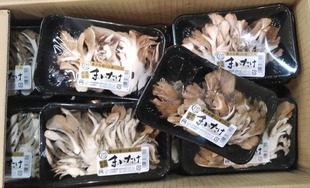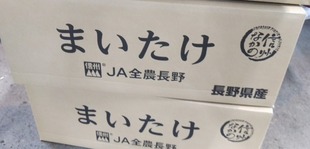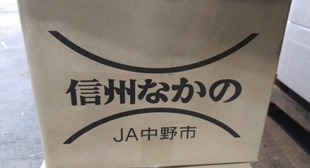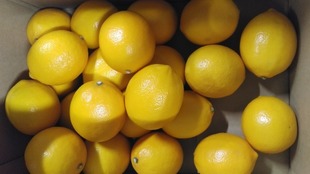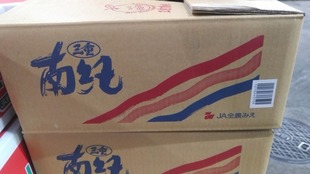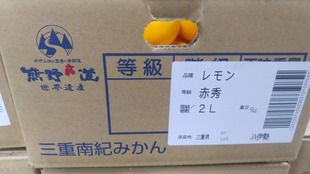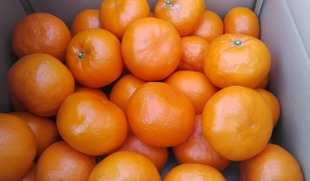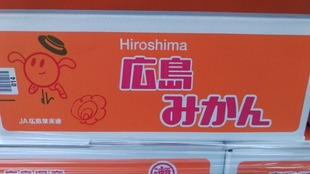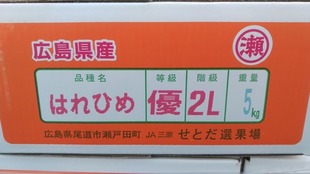【Product name】
Tochiotome
【Type】
Fragaria × ananassa Duchesne ex Rozier
【Producing area】
Tokiwa, Hokota City, Ibaraki Prefecture (Umehara Farm/Smile Strawberry Farm)
【Origin of name】
It was named because it was born in Tochigi Prefecture, which is a famous production area.
【Major features】
We have started to release a video series “Hokota no! Good Place Survey Team” that introduces the city’s special products and stores. It seems that the aim of the video is to let people know the charm and the actual situation of the release on the YOUTUBE channel “Hokota’s pride” and to connect it to emigration and settlement. By February 9, 2022, 11 videos have been released, and the final number will be about 40. Under the title of “Investigating the Hokota Brand”, the Hokota Brand Ambassadors and migrants, as a research team, listened to stories from people and places involved in the production of special products, businesses in the city, etc. There is. Each video is completed in about 1 minute so that you can watch it easily. In addition, even if you live in Hokota, there are places and shops that you do not know, so it will be an opportunity for citizens to get to know the city, and even people outside the city will be interested in the video. The video production seems to be part of the migration and settlement promotion project “Come on! Hokota” that Hokota City has been working on since 2021. In addition to the video, it seems that it has set up a special site and posted interview articles with migrants. As of November 2019: According to the producers, agriculture and strawberry cultivation are daily fights against pests, diseases and weeds. Every year, he seems to be troubled by thinking about how to provide the product with the appearance, quality, and stable price. Although it is within the standard, it can be improved to some extent by increasing the number of pesticide sprays, but it seems that it often does not work by itself. At “Umehara Farm(Smile foods)”, it seems that pests are being eradicated by natural enemies so that everyone can eat delicious strawberries (smile strawberry) with a smile and peace of mind. Phytoseiulus persimilis eats the strawberry’s intractable pest “spider mite”, so it seems that it has been introduced in large quantities. Amblyseius cucumeris (Oudeman) is also a difficult enemy pest, “Thysanoptera” : Parasitic on leaves and flowers, also known as slips. It occurs frequently especially in the hot and dry season of summer, and the flowers become malformed as the damage progresses. It seems that it will not be able to bloom. It seems that it is being used because it eats larvae. Aphidius colemani was first introduced last year. By laying eggs on “Aphido idea”, it seems that they will get rid of them. By having these natural enemies play an active role, it seems that the frequency of spraying pesticides can be reduced. It seems that “Harmonia axyridis”, which was introduced as a countermeasure against Aphido idea two years ago, was not included last year. Even inside the house, it seemed uncomfortable in the cold winter, and the website said it didn’t work. ステビア;アマハステビア : Stevia rebaudiana 栽培”(Histamine(ヒスタミン: The whole plant is sweet and has 300 times the sweetness of sugar, but has 1/90 calories, making it a popular low-calorie diet sweetener. Chewing fresh leaves tends to have a strong sweetness. When the extract extracted from the leaves and stems of stevia is sprayed on the fields, it is expected to promote the health of plants, become resistant to pests and diseases, and improve the soil such as increasing the sweetness of fruits.)is an active amine with the molecular formula C5H9N3 and a molecular weight of 111.14, and has been studied for its effective detoxification.)It’s an Asteraceae plant(A low-calorie sweetener from ingredients extracted from the leaves.)native to “Paraguay” and is rich in nutrients such as vitamins and minerals. Decomposes residual chemical substances by giving stevia extract, which has the effect of detoxifying dioxin and nicotine, to crops. In order to activate effective microorganisms, the soil that easily holds moisture and nutrients in the aggregate structure is activated. “A microorganism that retains a large amount of inorganic nitrogen”, Prevents pathogens and absorbs nutrients needed by crops. In addition, many hair roots cause absorption of calcium and magnesium, which makes plant physiology difficult. There is a tendency to produce healthy, long-lasting crops with good tension and strong tree vigor and less susceptibility to disease. The leaves contain sweet components such as stevioside and rebaudioside, which are surprising because they show about 300 times the sweetness of sugar. “Cherry tomato (Lycopersicon esculentum Mill. cv. Piko) ” plants were drip-irrigated at four soil moisture levels (pF 1.5, pF 2.0, pF 2.5 and pF 2.9) from the 17th day before fruits on the first cluster reached the red ripe stage. Under high water stress (pF 2.9), the total dry weight and water content of the plant decreased, compared to other treatments. However, the proportion of fruit dry weight per plant gradually increased proportionately to the pF, but the proportion of the leaf and root dry weight decreased. The total sugar content of the fruit increased as the pF value rose, but that of sucrose was lower than that of glucose and fructose under all of water conditions. Starch content in the fruit was equal and decreased during its ripening in all treatments. Although the water content of the fruit decreased with higher water stress, the difference in concentration among the four conditions was within 3% so that the sugar concentration was barely affected. Total nitrogen content and the nitrogen content in the water soluble protein under water stress at pF 2.9 were lower than thoes at pF 1.5 which suggests that the low nitrogen content may account for the high sugar content. We conclude that the optimum pF value ranges between pF 2.5 and 2.9, within which is optimum tomato fruit quality without any reduction in yield.(Reference, Department of Bioresources, Hiroshima Prefectural University,Journal of the Japanese Society for Horticultural Science 1998)The objective of this study was to clarify the components affecting the quality of cherry tomatoes grown on commercial organic farms and conventional ones in summer and autumn. Sixteen pairs of conventional cherry tomato samples and organic ones were taken from 16 farms and the content of ascorbic acid, lycopene, β-carotene, sugars, citric acid, free amino acids and the production of ethylene were analyzed. The organic cherry tomatoes contained significantly high amount of ascorbic acid and lycopene, but produced significantly low rate of ethylene compared to the conventional ones.(Reference, National Agricultural Research Center for Tohoku Region with Fukushima Agricultural Technology Centre and Faculty of Agriculture, Yamagata University, Journal of the Japanese Society for Food Science and Technology 2010)The objects of this study were to determine the contents of chemicals and physiological activities (CO_2 and C_2H_4 production) in the fruit of cherry tomatoes (Lycopersicon esculentum var. cerasiforme Alef.) cultivar Petit at three stages of ripening (pale green fruit, Pg.;partially ripe fruit, Pr. ; table-ripe fruit, Tr.) through July to November, and to study the physiological response to physical stress at picking time. The titratable acid (TA) contents of the jelly part was higher than those of the pulp, and the growing season had no effect on the TA contents. The TA contents of the Tr. fruit were the lowest in three stages. The Tr.fruit had the highest reducing sugar (RS) content, and the fruits harvested in August had the highest RS. The jelly part had higher free amino acid (AA) contents than the pulp, and the Tr. fruit had the highest AA content. The fruits harvested in July had the highest contents of AA. Respiration rates (CO_2 production) at picking time were the greatest in Pg. fruit and less in Tr. fruit. Respiration rates of Pg. and Pr. fruits decreased and Tr. fruit did not show an obvious change during a holding at 20℃. The C_2H_4 production of Pr. fruit was the greatest and less in Tr. fruit, and C_2H_4 productions of Pr. and Tr. fruits harvested in a high temperature season were greater than those of the fruits harvested in a cool season. Respiration rates and C_2H_4 productions of all fruits increased after the physical stress at picking time. The rate of increase in Pr. fruit was the greatest.(Reference, Graduate School of Agriculture and Biological Sciences, Osaka Prefecture University, Journal of the Japanese Society of Agricultural Technology Management 2000)Hokota City, Ibaraki Prefecture,” Located in the Rokko region in the southeastern part of Ibaraki Prefecture, it is one of the leading agricultural areas in Japan, blessed with a vast Pacific Ocean and abundant green land. Agriculture, which takes advantage of the flat terrain and mild climate, is a key industry and a food supply area for the entire metropolitan area. Not only fruits such as melons and strawberries, which are famous nationwide. Japanese mustard spinach, spinach, mizuna greens, tomato, carrot and other vegetables, which are known all over the country for many items. Oodo’s Sapindus mukorossi Gaertn(Indian soapberry): City natural monument – The light candy-colored fruit is impressive. When peeled, a black seed appears from inside. The seeds are used for the black balls on the wings of the New Year play battledore and shuttlecock. The real skin was used as a detergent in the past. That’s because when you rub it in water, bubbles form and it’s suitable for removing dirt. Minowa: ‘Tokushuku Castle: Designated as a city historic site’, Built by Mr. Tokushuku’s first Chikamoto-Ko at the end of the Heian period. He had been Shimotsuke no jo (local official for the Shimotsuke Province) before, but, by his merit of hunting down TAIRA no Masakado-Ko, he was promoted to Jushiinoge (Junior Forth Rank, Lower Grade) and appointed to the post of kokushi (provincial governors) for the Shimotsuke and Musashi Provisions as well as Chinju-fu shogun (Commander-in-Chief of the Defense of the North) and increased his power. After passing through the castle monument, climb the stairs at the entrance, and you will see a waist from the southwest to the south on your right. When you climb the stairs, you will find the main shrine, the Inari Shrine, the stone monument of Tokushuku monument to the memorial service, and the Hokyointo. etc. Father Narimoto Kashima-Ko is the 7th generation from Taira no Kunika-Ko(Takamochi did not return to Kyoto after he served out his term, and his sons Kunika filled the post of Hitachi no daijo (Senior Secretary of Hitachi Province) and Yoshimasa of Chinju-fu shogun (Commander-in-Chief of the Defense of the North)), who follows the tradition of Emperor Kanmu, and governs Kashima District at the will of the Hitachi Daijo clan. Tokushuku’s second generation(The ancestor of Mr. Anbo. Based in Kamata Castle Ruins)Mr. Hidemoto’s eldest son, Toshimoto-Ko, transferred the area including Awa and Hokota. In February 1336, he proceeded into the Urizura-jo Castle, and fought against Sadayoshi SATAKE-Ko and others of the Northern Court side, in cooperation of the Naka-Kawanobe family group lead by Haruhisa ODA, Michitoki NAKA-Ko, the Daijo family group lead by Tsuneyasu HIROHASHI-Ko, Takamoto DAIJO-Ko, and Nobumasa NAGAOKA-Ko, and the Chiba family group lead by Tanehira SOMA-Ko, among others. In 1486, when Tokushuku was the 9th Michimoto, he was attacked by Mr. Edo(Shigemichi fiercely attacked the Daijo clan who had their base in Fuchu), who is based in Mito Castle. etc. 歴史 / 伝統文化,『鉾神社夏祭り大祭』は, およそ400年以上の歴史をもつ鉾田最大の祭礼で, 8月の最終の金, 土, 日に行われる. 勇壮な神輿とともに, 山車や獅子舞が市内を巡行し, 街は, お囃子の音に包まれる.『厳島神社(Itsukushima (Miyajima): Island centering on Itsukushima-jinja Shrine existing in Hatsukaichi City, Hiroshima Prefecture.)』は, 子生の弁天様の名で親しまれている神社で, 1078年(承暦2年), 安芸宮島の厳島神社より分霊を迎えられたのが始まりと言われている. 貴重な建築物で, 県指定の文化財となっている.『無量寿寺』は, 806年(大同元年), 平城天皇(When Emperor Heizei had a conflict with his brother, Emperor Saga, and tried to move the capital in Heian kyo back to Heijokyo, Emperor Saga petitioned the deity that he would dedicate his daughter to Kamo no Okami (a guardian god of the capital) as ‘Areotome’ (a woman to join in the ceremony held at the Kamo-jinja Shrine for welcoming gods) if he had a chance of winning.)の勅願所として建立された. 1221年(承久3年)から3年間, 親鸞和尚(Selected and described by Shinran, the founder of the sect)が, この寺で教えを広めたと言われる.『大儀寺』は, 684年(貞享元年)仏頂禅師が, 廃庵となっていた, “大儀庵” を復興させ改められた. 禅師は, Mr. “Basyo Matsuo(Mr. Kigin KITAMURA’s one’s Student)” It is told that there was a friendship with. “Shaka Nyorai Statue” is valuable as a nationally designated important cultural property of “Okura Fukusenji”. It is made of cypress parquet and the statue height is 165.5 cm. Twelve Buddha statues are also embossed in the backlit part. , Created at the end of the Kamakura period. Developed during the Edo period as a key point for land and water transportation connecting Edo with the Tohoku and Hitachi regions. The traffic of humans and horses and the distribution of goods centered on marine products became popular, and agricultural products were also shipped to the Edo area. Minowa; “箕輪”(Former Asahi Village), It is right next to the producer’s field. Mizu shrine and Yagami shrine: It’s small, quietly blended into the area, and has an old-fashioned atmosphere like “the god of the village Guardian”. When you go up the old stone stairs, there is a stone monument next to the shrine, and the origin of the shrine is engraved. Yamato takeru no mikoto is eastern expedition – Take a boat from Kashima City Tsunoori (formerly Ono Village) and land near Kamigama, Hokota City. After that, I went inland and took a rest for a while on the south bank of Hinuma(Brackish water lake of Nakagawa water system). Then, when he departed, he gave the villagers a Crossbow (a stone bow that shoots an arrow). It is said that this shrine was dedicated to the villagers and built a small shrine. Nihonshoki(Chronicles of Japan); 日本武尊, Kojiki(Records of Ancient Matters); 倭建命, Hitachi Fudoki (description of the culture, climate, etc. of Hitachi province; approx. 720 CE); 倭武天皇. Various names and notations are confirmed in these documents. Legend has it that he wore one of the three sacred treasures, the Nagi-sword, and worked hard to settle the nations. The route and place of stay of Tosei are different between Kojiki and Nihonshoki. There are various theories about this, but there was also a legend that stopped by this place near Hinuma. 常盤-梅原農園 : From December 1, 2019 IoT devices that measure the environment inside the house are installed. It is possible to measure temperature, humidity, amount of solar radiation, and CO2 concentration, and it seems that the data can be graphed and viewed on a smartphone or personal computer. By seeing (visualizing) the experience and intuition so far as concrete numerical values, it seems that we are managing to create a better environment for strawberries and make them more happy for our customers. Even in the harsh natural environment of these days, strawberries, sweet potatoes, and spinach, which have made multifaceted efforts from both aspects of “intuition” and “visualization of data,” are exquisite. “Internet of Things” : Not only information and communication devices such as computers, but also various objects (things) existing in the world have communication functions, and by connecting to the Internet and communicating with each other, automatic recognition and control, It means to perform remote measurement and so on. 造谷 – 厳島神社本殿 : Konaji Ground -Worshipped deity ; 市杵島姫命(A pillar of the Three Goddesses of Munakata, the god of water.)- It is said that the company welcomed the spirit from Itsukushima in Aki on New Year’s Day in 1265. Inferred from the fact that it is closely related to the HITACHI Mr. Hei clan. Naturally, it can be considered from the former Asahi village area. “御累書年代記写”, 1809 ; 承暦二年(Joryaku, 1078年)子生山弁才天之此訳造谷村‘龍蔵院 硯録に在之由也 – Benzaiten(Also wealth and water)was enshrined in the land of Tsukuriya. However, Nakajima and Yatsuda(Reservoir)theory are influential. Transferred to a Konaji – In August 1672, everything from the Shrine building to the trees in the precincts was burnt down. Therefore, there are no records related to shrines. The main shrine was designated as a prefectural cultural property in March 1968. The hall of worship was designated as a village cultural property in September 1973. Pent roof built atop the stairs of a shrine or temple : The dragon sculpture is made of one piece of wood -Middle Edo. 樅山神社, 愛宕神社大権現 : Founded in 807 – A copy of the building tag of 853 remains. 吉田(大掾; 鹿嶋)“成幹”氏の子,(Eldest son)徳宿親幹- Ko(Kunika style)Later, Disappeared in the 1486 Momiyamagahara battle. It was erected and restored in 1600, and was fully repaired in 1983- City designated cultural property. “Hokomaru” from Hokota City, Ibaraki Prefecture, was born from the desire to make everyone’s hearts round. Hokota’s “Ho” character is the motif of the mascot character. It was born in 2008 and has gained popularity through open recruitment. Designated tangible cultural property : 県, 厳島神社 本殿, 子生,県, 無量寿寺 本堂, 鳥栖, 県, 無量寿寺 鐘楼, 鳥栖, 県, 無量寿寺 山門, 鳥栖, 市, 主石神社 本殿, 大和田, 市, 厳島神社 拝殿, 子生, 市, 樅山神社 本殿, 樅山, 市, 玉沢稲荷神社 本殿/ 拝殿, 冷水, 市, 八幡神社 本殿, 飯島, 市, 息栖神社 本殿, 二重作, 市, 永福寺薬師堂, 上幡木, 市, 鉾山神社 本殿, 上幡木, 市, 近津神社 本殿, 大蔵, 市, 光福寺 楼門, 梶山, 市, 八幡神社 拝殿, 飯島, 絵画 : 国, 紙本著色拾遺古徳伝, 鳥栖, 県, 紙本墨画維摩居士像 附 徳川光圀 書状4通, 松平頼救 跋1枚, 大蔵, 工芸品 : 市, 石祠 祭神市杵島姫命, 鹿田, 彫刻 : 国, 木造 釈迦如来立像, 大蔵, 県, 木造 如意輪観世音坐像, 汲上, 県, 銅造 薬師如来立像, 梶山, 市, 金銅大仏坐像, 借宿, 市, 銅像 三体仏, 安房, 市, “石造 諏訪青山の地蔵菩薩, 柏熊, 市, 木造 薬師如来坐像, 柏熊, 市”, 木造 如意輪観世音坐像, 安房, 市, 木造 千手観世音立像, 烟田, 市, 木造 両脇侍立像, 烟田, 市, 木造 宝冠釈迦如来坐像, 青柳, 市, 木造 十一面観音坐像下, 冨田, 市, 木造 薬師瑠璃光如来座像, 阿玉, 市, 木造 十一面観音立像, 札, 書跡 : 無量寿寺御文書, 鳥栖, 市, 医書(瘍医大全), 徳宿, 考古資料 : 市, 弥生式ツボ, 徳宿, 市, 烟田氏の墓碑, 烟田, 市, 縄文, 注口土器, 塔ケ崎, 市, 梶山古墳群4号墳出土遺物, 汲上, 記念物 : 史跡 : 市, 三階城跡, 安房, 市, 徳宿城跡, 徳宿, 市, 中居城跡, 中居, 市, 白鳥の里, 中居, 市, 大峰山古墳群, 中居, 名勝 : 市, 大儀寺境内全域, 阿玉, 天然記念物 : 県, 無量寿寺のボダイジュ, 鳥栖, 県, お葉つきイチョウ, 中居, 市, 沼尾神社の欅, 徳宿, 市, 諏訪神社樹叢, 安房, 市, 安祥寺の榧並木, 安房, 市, 谷越神社樹叢, 飯名, 市, 無量寿寺樹叢, 鳥栖, 市, かたくり群生地, 青柳, 市, 無量寿寺の斑入銀杏, 鳥栖, 市, 無量寿寺の焼榧, 鳥栖, 市, 三渡神社の御神木, 秋山, 市, 大戸のムクロジ, 大戸, 市, 秋山の榊, 秋山, 市, 野友の椎, 野友, 市, 青柳のもち, 青柳, 市, 国都神神社御神木「椎」, 上太田, 市, 飯田「もち」, 鹿田, 市, 勝下 「イスノキ」, 勝下, 市, 樅山「ヒサカキ」, 樅山, 市, 八幡神社樹叢, 飯島. The former Funaki Elementary School was closed in the spring of 2016. The old Yoshino cherry tree that blooms in the middle of the schoolyard is a famous cherry blossom that goes along with the history of the school. According to “Public Relations Hokota”, the school opened in 1909, and the cherry blossoms in the center of the schoolyard are old trees over 100 years old. Currently, the school building has been demolished, but the cherry blossoms seem to remain. The nearest stations in the vicinity are Kashima Asahi Station (Kashima Rinkai Railway): Distance: 4167 m (52 minutes on foot), Tokushuku Station (Kashima Rinkai Railway): Distance: 4605 m (57 minutes on foot). From the Ministry of Agriculture, Forestry and Fisheries variety registration website, Tochiotome. Application number 6947 Date of application 1994/06/21 Registration number 5248. “Kurume No. 49 STRAWBERRY (Toyonoka STRAWBERRY× Nyoho STRAWBERRY)” to “Tochinomine STRAWBERRY (system 511 × Nyoho STRAWBERRY)” Registration No. 3452 Registration Date March 17, 1993. The date of extinction of breeders’ rights was March 18, 1995: Tochigi No. 11. Name of variety registrant Tochigi prefecture and below. It is a variety suitable for forcing cultivation because it has a large circular weight and the number of flowers per flower cluster is rather small. The grass shape is medium, the grass vigor is strong, the plant height is a little high, the number of splits is medium, and the number of runners is a little large. The leaf color is dark green, the leaf shape is upward, the thickness is thick, the number of leaves is medium, and the petiole is thick. The color of the pericarp is bright red, the shape of the fruit is a pyramid, the size of the fruit is large, the color of the flesh is light red, the color of the heart of the fruit is red-red, the gloss of the fruit is good, and the groove of the fruit is quite small. The size of the flower is medium, the color of the petals is white, the number of flowers per flower cluster is a little small, the thickness of the peduncle is quite thick, and the length of the peduncle is long. The hardness of the fruit is quite hard, there is almost no seedless band, the depression of the fruit is diminishing, the anthocyanin coloring of the fruit is light, the number of fruit is medium, and the aroma of the fruit is medium. Seasonality is one season, the beginning of flowering is a little early, the maturity is medium, the flowering position is the same level as the leaves, the dormancy is quite short, the soluble solid content is quite high, the acidity is medium, and the shelf life is long. Compared to “Nyoho”, the leaves are thicker, the color of the fruit heart is reddish, and the anthocyanin coloring of the fruit is lighter. It is said that distinction is recognized by the fact that the color is light red, the color of the flesh is red-red, and the hardness of the fruit is hard. Date of registration 1996/11/21 Duration of breeder’s rights 15 years Date of extinction of breeder’s rights 2011/11/22 * Period expired. Variety registrant, Hanawada, Utsunomiya City, Tochigi Prefecture, Registered cultivar breeder, Mr. Ishihara, Mr. Takano, Mr. Ueki, Mr. Tochigi. A Tochigi variety with a good balance of sourness and sweetness, and excellent compatibility with sweets such as fresh cream. Instead of “Nyoho”, it became a representative strawberry in eastern Japan, and it is the most produced variety in Japan. Large, glossy fruit with firm fruit, strong aroma, sweetness and moderate acidity. It seems that the first strawberry shipping work of this season by the JA Shimotsuke Strawberry Subcommittee(Tochigi Strawberry Subcommittee, Mibu District Strawberry Subcommittee)was carried out on October 25, 2021 at the collection and shipping site in Fukuwada, Mibu Town. I heard that there are no natural disasters or illnesses this year and that growth is going well. 246 strawberry farmers are members of the group. The cultivated area has reached 64 hectares including “Skyberry(I heard that it was named after the famous Mt. Sukai of hundred famous mountains in Japan in the prefecture. It is hoped that all of “big, beautiful and delicious” will reach the sky. “Tochigi No. i27” : Ministry of Agriculture, Forestry and Fisheries variety registration homepage, Application number 26477 Date of application 2011/11/15 Date of publication of application 2012/02/20 Registration number 23749. The color of the leaf surface is dark green, the aspect ratio of the apical leaflet is vertically long, the shape of the serration of the apical leaflet is medium, the shape of the cross section of the apical leaflet is flat, the length of the leaf stalk is long, the number of flowers is small, and the flower Medium diameter, petal surface color is white, fruit size is quite large, fruit aspect ratio is portrait, fruit shape is conical, pericarp color is orange-red, fruit gloss is medium, fruit thin The depression is small, the fruit is attached horizontally, the size of the fruit is slightly large relative to the fruit diameter, the hardness of the fruit is slightly hard, the color of the pericarp is orange-red, the color of the heart is light red, and the fruit. The cavity is absent or small, and the seasonality is one season.)”, and it seems that shipments will gradually begin in earnest toward the peak of next spring. Please pay attention to it. Tochigi Prefectural Agricultural Experiment Station: “Strawberries” in Tochigi Prefecture boast the highest production volume and sales value in Japan, and “Tochiotome” developed by this prefecture seems to occupy 30% of the strawberry planted area in Japan at present. Aiming for the further development of “Strawberry Kingdom Tochigi”, the first “Strawberry Research Institute” in Japan was opened on October 1, 2008. In addition to fostering new varieties that will lead the next generation and developing new technologies, we are very much looking forward to it as a comprehensive research and development base for strawberries, which is also equipped with new functions such as research and analysis of consumption trends and training. Tochiaika: Applicant’s name and address Tochigi Prefecture (Hanawada, Utsunomiya City, Tochigi Prefecture) Application No. 33245 Date of application 2018/07/09 Date of publication of application 2018/11/13 Date of withdrawal Rejection Name of trainer, Mr. Yasuhiro Kobayashi, Mr. Takashi Shigeno, Mr. Takashi Ohashi, Mr. Akitsugu Hatakeyama, Mr. Kazunari Iimura, Mr. Tatsuro Nakanishi, Mr. Masaaki Ueki, Ms. Akina Toyoda, Ms. Asami Nagashima, Mr. Yoshinori Saito, Ms. Risa Tsurumi, Ms. Natsumi Kojima, Mr. Yukio Ohashi, Export There are restrictions on the actions to be taken, there is no designated country. It was also called the 10th original variety of Tochigi prefecture, also known as “Tochigi i37”. It is a completely new kind of strawberry that was first shipped from Tochigi in the fall of 2019. It seems that it was decided by the purchaser. The name was decided to be Tochiaika, which received the most votes from Tochiaika, Tochiakari, Tochimaru, Tochireiwa, Emika, and Amane. Tochiaika was filed for variety registration in 2018 by the Tochigi Prefectural Agricultural Experiment Station Ichigo Research Institute (Tochigi City). The grains are relatively large, have little acidity, and have a strong sweetness, and are characterized by a hard texture as a strawberry. The inside of the fruit is white. The yield per unit area is 30% higher than that of Tochiotome, which makes it easier to cultivate. The most famous variety from Tochigi is “Tochiotome”, but it seems that farmers were worried about being susceptible to the disease “chloranemia(Fusarium oxysporum Schlechtendahl: Fries f.sp. fragariae Winks et Williams)(It is a type of filamentous fungus and is transmitted from the roots of strawberries. When the disease develops, the new leaves turn yellow-green, twist in a boat shape, and 1-2 of the 3 leaflets become smaller. When the crown of the diseased strain was cut, part or all of the vascular bundle turned brown. When it occurs in the parent strain of the nursery, the number of runners that occur decreases, and malformed leaves also occur in the new leaves of the runners. When it occurs during the harvest season, fruit set is reduced and fruit enlargement is worsened. The optimum temperature for growth of pathogens is around 28 ° C, and the optimum soil temperature for disease onset is 25 to 30 ° C. It spreads by soil transmission and seedling transmission (latent infection), and is secondarily transmitted by splashing of water droplets due to rainfall or overhead irrigation. I’ve heard that continuous cropping of strawberries in the field where this disease occurred will increase the damage. It seems to be a relatively new disease discovered in 1970. At first, one or two leaflets of new leaves turn yellowish green, and they are miniaturized and rolled into a boat shape. The leaves that develop after that also become malformed, and the entire plant becomes significantly poorly grown. The leaves are lifeless, exhibit yellowing, and are purplish-red, and the entire plant may die. When it occurs in the parent strain of the nursery, the number of runners is reduced, and the new leaves of the runners are also malformed. When it occurs during the harvest season, fruit set is reduced and fruit enlargement is also worsened. It may wither before showing yellowing or malformations of new leaves (acute symptoms). When the crown is cut, part or all of the vascular bundle is discolored from brown to dark brown, and most of the roots are also dark brown, and many of them are rotten. Mild strains seem to have no symptoms at low temperatures. Pathogens only affect strawberries. It forms large conidia, small conidia, and chlamydospores, and mainly chlamydospores remain in the soil and become a source of infection. They invade from the roots of strawberries, invade conduits, and become infected. Chlamydospores survive in soil for long periods of 4-5 years or longer. The optimum temperature for growth is around 28 ° C. In addition to soil transmission, when a lightly damaged strain is used as the parent strain, the fungus is transferred to the seedlings through the runner, and it seems that seedling transmission is often carried out. The optimum soil temperature for disease onset is 25 to 30 ° C, and it is easy to get infected and get sick in the high temperature period, but it seems that the symptoms may become unclear in the very hot midsummer. It is said that it is easy to get sick in continuous cropping fields, fields with large difference in soil dryness, fields with low pH, and fields where a large amount of undecomposed organic matter is applied. When the generated field strain is used as the parent strain, the disease of runners and seedlings collected from them increases. There are differences in the onset of illness depending on the variety, and it seems that the early life of treasure is extremely weak. Compared to Wase Hoko(I heard that the origin of the name is “Hoko”, which is a variety crossed in Takarazuka, Hyogo Prefecture, and “Wase”, which is a variety that can be shipped earlier than other varieties at the time of development. Both the skin and flesh are soft and juicy. It is a standard variety of outdoor cultivation by cross breeding of “Kogyoku” × “Tahoe”. In forcing cultivation, it seems necessary to maintain the grass vigor by lighting and heating.), female peaks, Tochiotome, Sagahonoka(Application number 9676 Date of application 1997/03/26 Date of publication of application 1999/03/18 Registration number 8839. Onishiki(Registration No. 2279 Registration Date June 13,1990. The date of extinction of breeder’s rights is June 14, 1993, and the deadline for registering varieties is 15 years. Variety registrant, Mikado Breeding Farm Co., Ltd., Chuo Ward, Chiba City, Chiba Prefecture) × Toyonoka(Application number 811 Date of application 1983/03/29 Registration number 615. “Himiko (former strain name, Strawberry Kurume No. 36, certification date, May 1975)” × “Harunoka (Ichigo Norin No. 11, old strain name, Forcing No. 4, certification date, July 1967)” It was selected and cultivated by mating. The fruits have a good appearance, a strong sweetness, and an extremely excellent aroma, and are varieties that can be produced early with a high early yield and are suitable for forcing and semi-forcing cultivation. The grass is medium, the grass is strong, and the grass is high. The leaf color is dark green, the leaf shape is flat, and the leaf thickness is thick. The leaflets are large in size and the number of leaves is rather small. The number of runners is rather large, the color of the runners is light red, and the thickness of the runners is slightly thick. The size of the flower is rather large, and the difficulty of detaching the flower ben is a little easy. The fruit shape is a cone, the fruit size is large, the skin color is bright red, the fruit gloss is good, the flesh color is yellowish white, and the fruit heart color is white. There is no fruit neck, the number of fruits is medium, and the fruit is being dropped a little. The size of the calyx relative to the fruit shape is large. The hardness of the fruit is a little hard, the content of soluble solids is high, the acidity is a little low, and the aroma of the fruit is quite high. The flower bud differentiation stage, flowering beginning stage and maturity stage are all early. Dormancy is fairly short. The shelf life is rather long, and the transportability is high. Compared to “Harunoka”, it has a lot of fruit scent, and the fruit has a good luster. It is said that sex is recognized. Date of registration, 09/05/1984, Duration of breeders’ rights, 15 years, Date of extinction of breeders’ rights, 09/06/1999. It was cultivated by crossing Variety registrant, Vegetable and Tea Industry Experiment Station, Ano Town, Aki District, Mie Prefecture (currently Tsu City)). It is a cultivar suitable for forcing cultivation, which is pyramidal, large and hard. The shape of the grass is upright, the grass is strong, the height of the grass is high, the number of divisions is small, and the runner(A method of growing seedlings by rooting the shoots that attach to the stems)The number is rather large. The leaf color is dark green, the leaf shape is upward, the leaflet size is quite large, the number of leaves is a little small, and the petiole thickness is quite thick. The color of the pericarp is bright red, the shape of the fruit is a cone, the size of the fruit is large, the color of the flesh and the heart of the fruit is white, the gloss of the fruit is good, and the groove of the fruit is small. The size of the flower is large, the color of the petals is white, the number of flowers per inflorescence is quite small, and the thickness of the peduncle is thick. The hardness of the fruit is hard, there is almost no seedless band, the depression of the fruit is decreasing, the anthocyanin coloring of the fruit is slightly light, the number of fruit is coarse, and the aroma of the fruit is slightly high. Seasonality is one season(It bears fruit from winter to spring and does not bear fruit after that), Early flowering and maturity, flowering position is at the same level as leaves, soluble solid content is high, acidity is low, and shelf life is long. Compared to “Toyonoka”, the grass shape is upright, the flesh color is white, there are few fruit grooves, etc., and the leaflets are larger than “Sachinoka”. It is said that the distinction is recognized by the fact that the flesh color is white and that the fruit has a large drop. Registration date 2001/03/19 The duration of breeder’s rights is 20 years. Variety registrant, Saga City, Saga Prefecture, Registered cultivar breeder, Mr. Tanaka, Mr. Mori, Mr. Nakajima, Mr. Matsuo, Mr. Tanaka, Mr. Nakamura. It was born in 1998, and now that the production technology has been established, it is licensed outside the prefecture without monopolizing the varieties. It is conical and well-aligned, and the flesh is bright red and white with a glossy finish. Ideal sweetness with less sourness and cleanliness. It has a faint floral scent and is suitable for transportation.), etc. are less susceptible to disease, but they seem to be more likely to develop the disease in contaminated fields with high bacterial density.)”, which is said to be the natural enemy of strawberries. Therefore, after repeated research at the Tochigi Prefectural Agricultural Experiment Station Ichigo Research Institute, we finally developed a long-awaited variety that is resistant to diseases. The characteristic of Tochiaika is its sweetness. The sugar content is about the same as Tochiotome, but the sweetness is more pronounced due to the less sourness. Very fragrant and juicy. The size is between Tochiotome and Skyberry, but it seems to grow into a large ball size that looks good. The remaining two houses are cultivated in soil, and it seems that it is also a place for demonstration experiments to confirm which is more suitable for cultivation than hydroponics. It is hard to get sick, has cold resistance, is highly environmentally friendly, and is easy to cultivate, so it seems to be a variety suitable for people with little cultivation history and new farmers. In addition, the flowers grow quickly and bloom continuously, so the fruits are produced one after another, and stable yields and increased yields can be expected. Furthermore, it is said that the long harvest period from the end of October to the beginning of June is a great advantage for producers. “Strawberry” in Tochigi Prefecture, which developed Tochiaika, boasts the highest production volume and sales value in Japan, and “Tochiotome” developed by this prefecture currently occupies 30% of the strawberry acreage in Japan. That’s it. Aiming for further development of “Strawberry Kingdom Tochigi”, the first “Strawberry Research Institute” in Japan was opened on October 1, 2008. As a comprehensive R & D base for strawberries, which is equipped with functions such as research and analysis of consumption trends and training, in addition to fostering new varieties and developing new technologies that will lead the next generation, not only local governments but also the national government And supports the world. Skin-whitening effect, improvement of visual function, prevention of infectious diseases, relief of stress, maintenance of female health such as during pregnancy, lowering cholesterol level, prevention of diabetes, elimination of constipation, prevention of tooth decay.
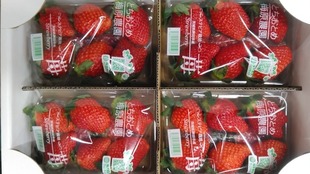
A standard variety in the strawberry world. It is also cultivated in many places in Ibaraki prefecture, and accounts for most of the strawberries produced. It has a high sugar content and a moderately sour taste, and its flesh is firm and is popular with many fans. Ibaraki Prefecture has the 7th largest planted area in Japan (2020 Ministry of Agriculture, Forestry and Fisheries statistics). It is one of the leading strawberry producing areas in Japan.
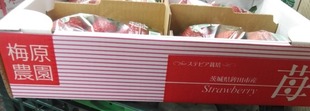
At the farm, you can check the details from the colorful HP. Strawberries have begun to be harvested from November 3rd in 2022, and it seems that they are harvesting and packing strawberries almost every day without being busy.
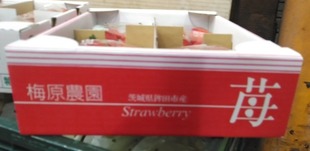
According to the representative, how to handle strawberries changes depending on the environment at that time, facing nature and listening to the voice of strawberries. To be honest, it seems that he is suffering from the lack of sunshine and the heat of summer. However, he states that he will do his best to make everyone (consumers) happy with a smile. Indeed, he is a hard worker and has a good personality.
